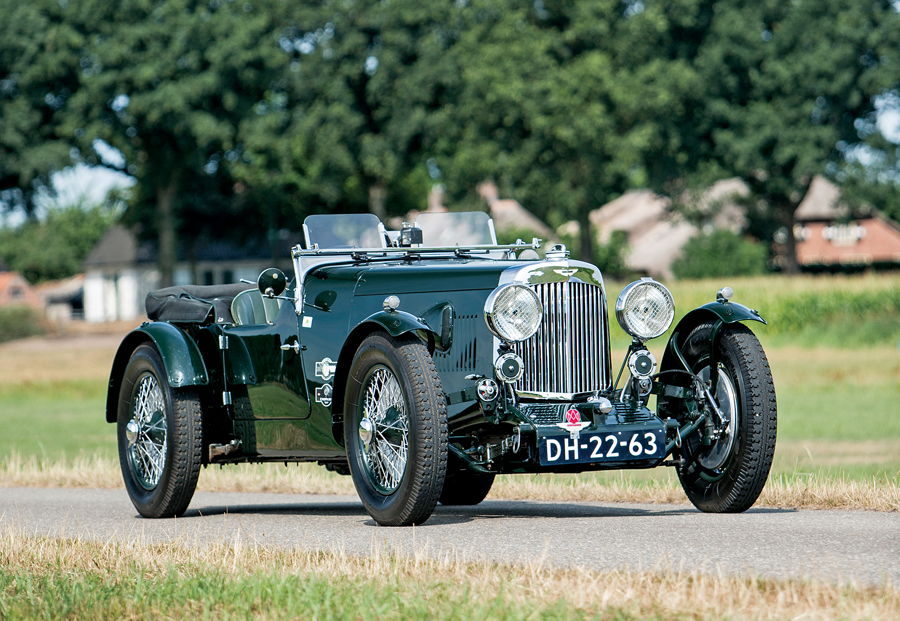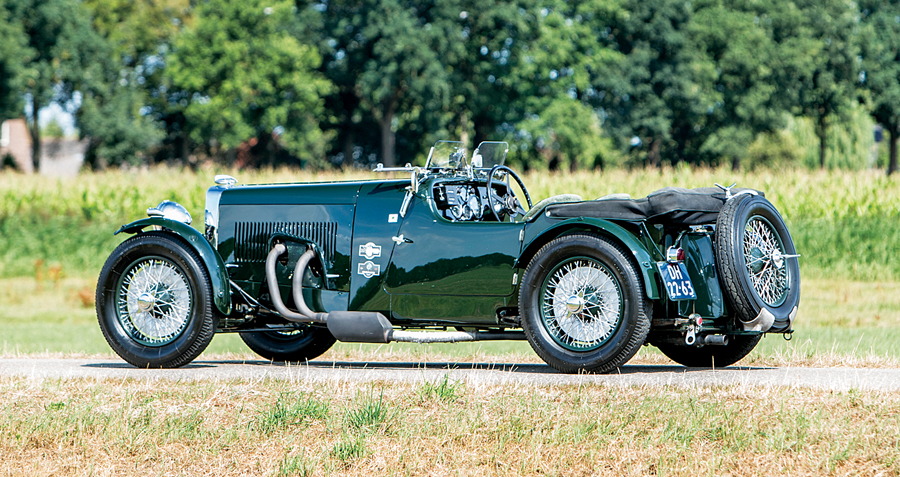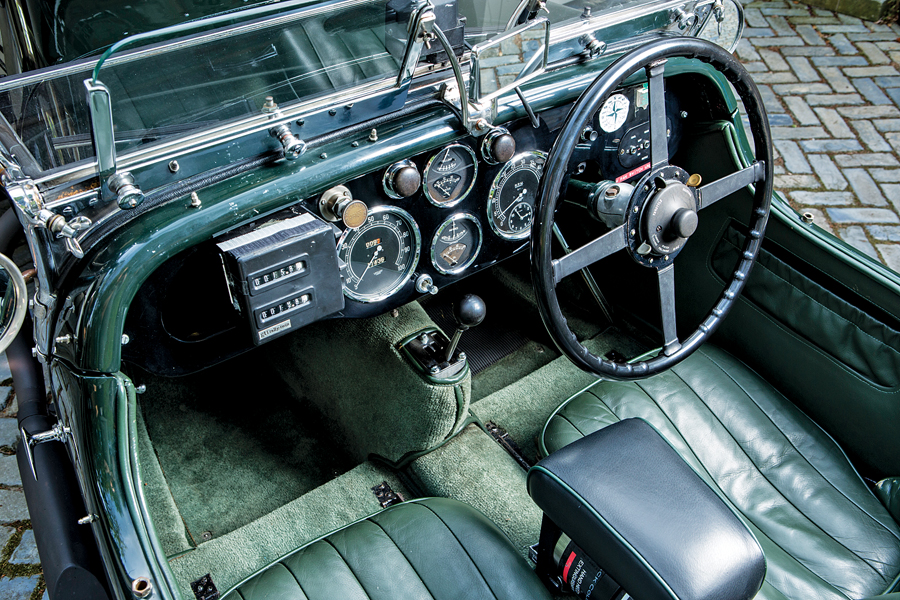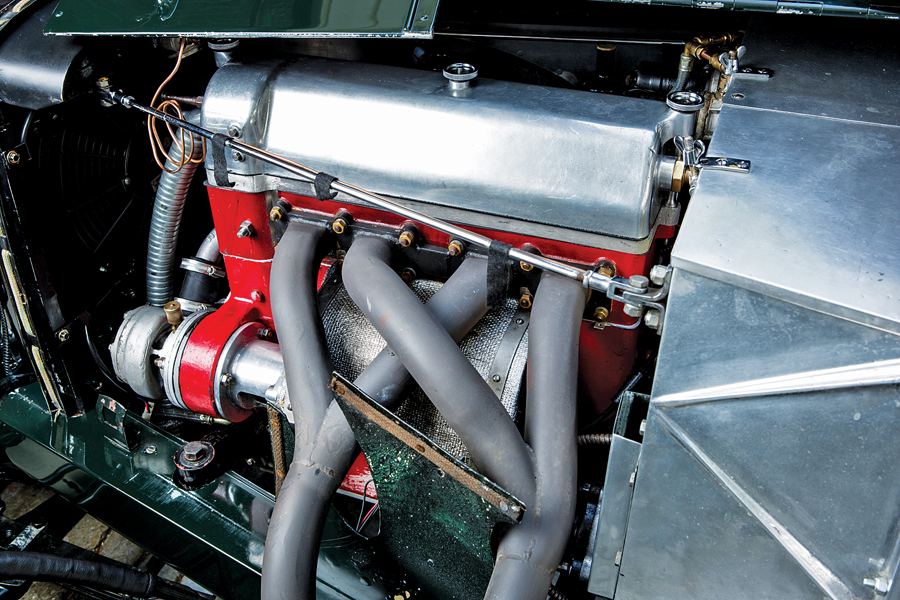SCM Analysis
Detailing
| Vehicle: | 1934 Aston Martin 1½ Litre Mark II Short Chassis |
| Years Produced: | 1934–35 |
| Number Produced: | 61 short-chassis Mk IIs |
| Original List Price: | $2,500 |
| SCM Valuation: | $232,788 |
| Chassis Number Location: | On scuttle plate |
| Engine Number Location: | On engine mount |
| Club Info: | Aston Martin Owners Club, Drayton St Leonard, Oxfordshire, U.K. OX10 7BG, +44 1865 400400 |
| Website: | http://www.amoc.org |
| Alternatives: | 1929–33 Alfa Romeo 6C 1750, 1932–33 MG F-type Magna, 1934–35 Riley MPH/Sprite |
| Investment Grade: | B |
This car, Lot 233, sold for $344,124, including buyer’s premium, at Bonhams’ Goodwood Revival sale in Chichester, U.K., on September 8, 2018.
The short-chassis Mk II was the model that sired the 1934 Team Cars, which really put Aston Martin on the map — and from them came the legendary Ulster.
The racers used the same chassis and the same basic engine as the Mk II, although they were fitted with lighter bodywork.
There were 31 Ulsters built, 10 of them Works racers, and the whereabouts of 28 are still known. Prices start at about $2 million, with Works racers double that — although a customer car did dip down to $1.4 million at Bonhams’ Goodwood auction in September 2015 (SCM# 266845).
So our subject car is practically an Ulster, as it has the same chassis and an Ulster-spec engine, so it must look a great value at a sixth of the price.
Not quite. It’s all about what is fashionable — rather like the conundrum between 1973 and 1974 Porsche RS 2.7s. Just because the Porsche chassis number starts 911360 instead of 911460, it multiplies the value threefold even though the hardware — and weight — is near identical, aside from the bumpers.
While Ulsters are scarce — especially the Works cars — there were rather more Mk IIs built. A total of 137 were built, made up of 61 2/4-seater short-chassis cars, plus 52 four-seaters, of which seven were drophead coupes, and 24 of the stylish sports saloons by Enrico Bertelli, all on the longer 10-foot chassis.
The Mark II cars still feature motorcycle front fenders that turn with the wheels, but the distinctive and easily identifiable feature of the Mark II is its chrome radiator shell with thermostatically controlled shutters rather than the mesh on the Ulsters.
Our subject Mark II
This car was certainly up to scratch with no needs. For the past 20 years, it has been in Holland, and according to its AMOC Register entry, it underwent a total rebuild there in 1989/1990, shortly afterwards winning its class at the Stanway Concours.
In 2012, the engine was rebuilt at Ecurie Bertelli to Ulster specification, which means about 85 hp instead of 73.
So it goes like an Ulster, drives like one — and even looks the part. But an Ulster it is not, and collectors tend to be picky about such things.
The massive difference in price comes down to period competition provenance. Organizers of the world’s top historic events want the “right” sort of cars, and they can afford to pick and choose.
Not a ticket to a big ride
John Polson, a Bonhams car specialist and pre-war expert, consigned this car and the last two Ulsters that Bonhams sold.
“The Ulster and the Mark II short chassis are extremely similar mechanically and to drive, but there are several reasons for the difference in value,” Polson said. “‘First of all, the pointed-tail Ulster is the absolute archetypal pre-war Aston that did everything in-period and a lot of winning, and as such is the hero car when a collector wants a pre-war Aston.
“It may really only differ in the body, but that is the car everyone lusts after. Very much connected with this is the level of eligibility of the Ulster. As with most collectors’ cars, a large part of its value hangs on its eligibility — what events it will get you into. Astons raced the Ulster absolutely everywhere in-period and generally very successfully — Mille Miglia, Le Mans, Targa — you name it, they were racing there.
“This is well illustrated by the value of the Mark II’s predecessor, the Le Mans. One of these was run in the Mille Miglia in-period and as such they are now eligible for this event, so their values are now circa double that of the very similar short-chassis Mark II purely for this reason.”
Polson concluded: “As such, the Mark II short chassis is good value, but it is not the 1930s icon of Aston Martin history and it will not get you into the big events — so there is logic to their relative values.”
Interestingly, the catalog claimed that this car had run twice in the Mille Miglia retrospective before its restoration. In that event provenance is all, which might have loaded the price slightly, as it was a third higher than the last short-chassis Mk II at auction — the ex-Bill Cosby car.
But even if the new owner doesn’t get lucky with another entry, the price paid here will provide the same driving experience as an Ulster at one-tenth the money. ♦
(Introductory description courtesy of Bonhams.)



